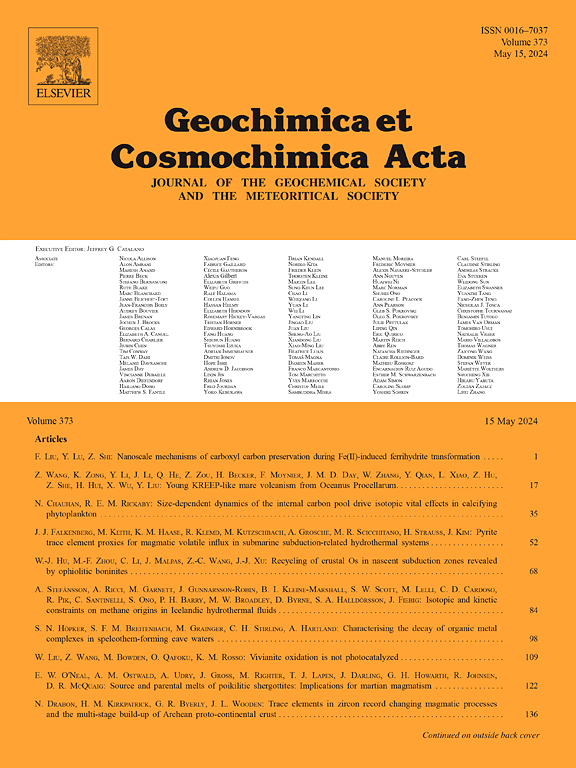Potassium isotopic compositions and model exposure ages of lunar soils
IF 4.5
1区 地球科学
Q1 GEOCHEMISTRY & GEOPHYSICS
引用次数: 0
Abstract
Space weathering has long been known to alter the chemical and physical properties of the surfaces of airless bodies such as the Moon. The isotopic compositions of moderately volatile elements in lunar regolith samples could serve as sensitive tracers for assessing the intensity and duration of space weathering. In this study, we develop a new quantitative tool to study space weathering and constrain surface exposure ages based on potassium isotopic compositions of lunar soils. We first report the K isotopic compositions of 13 bulk lunar soils and 20 interval soil samples from the Apollo 15 deep drill core (15004 – 15006). We observe significant K isotope fractionation in these lunar soil samples, ranging from 0.00 ‰ to + 11.77 ‰, compared to the bulk silicate Moon (–0.07 ± 0.09 ‰). Additionally, a strong correlation between soil maturity (求助全文
约1分钟内获得全文
求助全文
来源期刊

Geochimica et Cosmochimica Acta
地学-地球化学与地球物理
CiteScore
9.60
自引率
14.00%
发文量
437
审稿时长
6 months
期刊介绍:
Geochimica et Cosmochimica Acta publishes research papers in a wide range of subjects in terrestrial geochemistry, meteoritics, and planetary geochemistry. The scope of the journal includes:
1). Physical chemistry of gases, aqueous solutions, glasses, and crystalline solids
2). Igneous and metamorphic petrology
3). Chemical processes in the atmosphere, hydrosphere, biosphere, and lithosphere of the Earth
4). Organic geochemistry
5). Isotope geochemistry
6). Meteoritics and meteorite impacts
7). Lunar science; and
8). Planetary geochemistry.
 求助内容:
求助内容: 应助结果提醒方式:
应助结果提醒方式:


